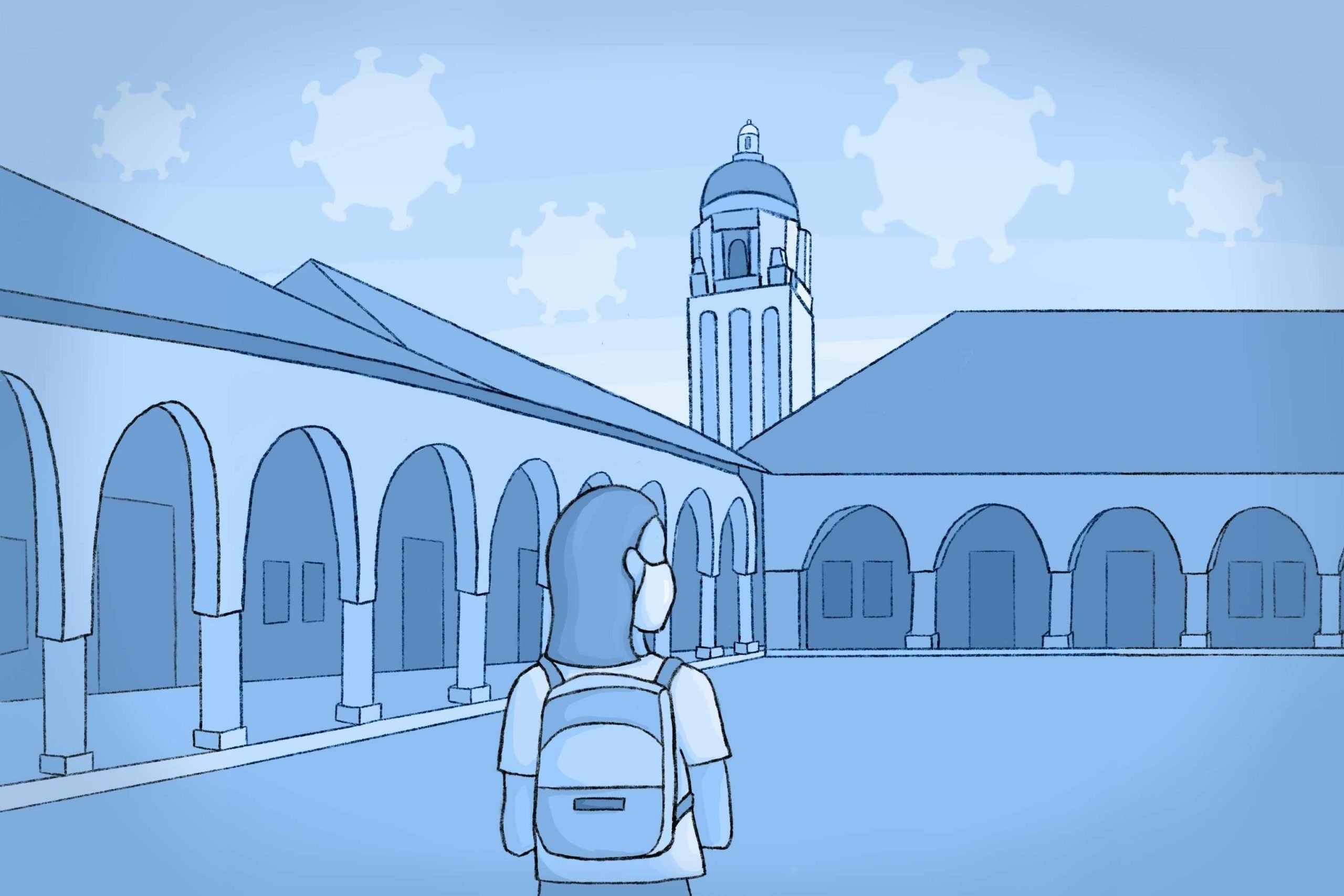Teddy Suisman ’25 was unsure of how University COVID-19 policies would evolve this quarter before he arrived on campus for the first time as a Stanford student. Suisman had deferred his enrollment after being admitted in December 2019 and was concerned about the academic transition after a year of no schooling. Still, Suisman said that he was initially most looking forward to being in a “social environment with a lot of interesting people.”
Since arriving on campus, Suisman said that his expectations, especially those regarding social life, have been exceeded. “The past two weeks have been the most stimulating, and possibly all around the best of my entire life,” Suisman said.
Undergraduates like Suisman returned to campus for mostly in-person classes this fall, for the first time since winter 2020. Prior to the return, some Stanford students and local medical professionals said that they were wary of the University’s vision to return to “pre-pandemic operations.” Now that they have arrived on campus, some students said that they are still experiencing COVID-19-related apprehensions and shared their hopes for the future.
Before they arrived on campus, some students were concerned about how they would be able to resume their extracurricular activities in a meaningful way while still adhering to COVID-19 protocols.
According to Star Doby ’23, publicity manager for the a cappella group Talisman, before the quarter began, her group was concerned about how they would be able to engage in physical activities after receiving little guidance from the University. While the Office of Student Engagement (OSE) strongly recommended a cappella groups wear masks and maintain physical distance, Doby said that she would have been unaware of these recommendations had she not attended a cappella council meetings.
Doby told The Daily the transition back to campus has been “a whirlwind,” especially since the group can’t anticipate how COVID-19 guidelines will evolve.
“It’s very hard working on unstable ground, meaning the University isn’t always clear about what’s going to actually be happening,” Doby said.
Two weeks into the quarter, Doby said that “it’s been an arduous process communicating with the OSE because of how uncertain the circumstances are.” She added that her group is abiding by the ban on indoor gatherings, which is set to expire on Oct. 8. The group hopes to learn more about how to gather in-person in the near future, according to Doby.
Like Suisman, Emma Sun ’24 expressed excitement about being on campus for the first time, though she also shared concerns about the limitations on community building and socializing posed by the pandemic.
“I want to emphasize that I understand that things have to look different in order to keep the community safe, but sometimes I do get nervous that I’ll get through most of college without ever having the full college experience,” she wrote in a statement to The Daily.
While some in-person meetings with advisors and clubs are still taking place, most language classes are still being offered remotely. According to University spokesperson E.J. Miranda, prior to the return to campus, the Language Center expressed concern over the ability to see mouth movements which are “an integral part of the teaching and learning process that would be impeded by a mask.”
For similar reasons, music classes are also being offered in a remote synchronous setting in addition to their in-person availability.
There is currently no requirement, however, that class meetings be recorded for students who test positive for COVID-19 — a policy about which some students have expressed concerns. Students recently created a petition calling on Stanford to increase COVID-19 course accessibility by requiring that classes be made virtually accessible to students in COVID-19 isolation.
Stanford has experienced a low prevalence of COVID-19 cases since students began arriving on campus. This week, the University reported eight new student and seven new employee COVID-19 cases, the lowest case rate since the start of the quarter, though more tests were conducted at the start of the quarter due to arrival testing requirements.
Local doctors, despite being confident in Stanford’s requirement that students test regularly, also expressed concerns about the return to communal living.
According to University of California, San Francisco (UCSF) professor of epidemiology and biostatistics George Rutherford ’75, outbreaks on college campuses are dependent on the amount of mixing that occurs between the on-campus and neighboring communities, as well as the mitigation efforts present on campuses.
UCSF professor of medicine Peter Chin-Hong expressed similar views.
“It all depends on the environment in which you’re existing. If the surrounding area is on fire, it affects the safety of the environment that you’re trying to exist in,” Chin-Hong said.
According to Chin-Hong, since most schools feed into their respective communities, outbreaks on college campuses are inevitable because the concept of a “‘campus’ is an artificial construct.”
However, in Santa Clara County, COVID-19 cases continue to decline. K-12 education has resumed in-person learning and the nearby Palo Alto Unified School District has reported a total of 41 positive cases since the start of its school year on Aug. 11. The relatively low rates of COVID-19 cases around Stanford have allowed the University to continue to ease some on-campus restrictions, making more in-person social activities possible.
Even with remaining restrictions and students being apart during the virtual year of learning, some students expressed excitement about reuniting with old faces and meeting new people.
“To be honest, it feels like this year is my freshman year, and I’m looking forward to really ‘becoming’ a Stanford student. More than anything else, I’m looking forward to meeting people and finding community,” Sun said.
